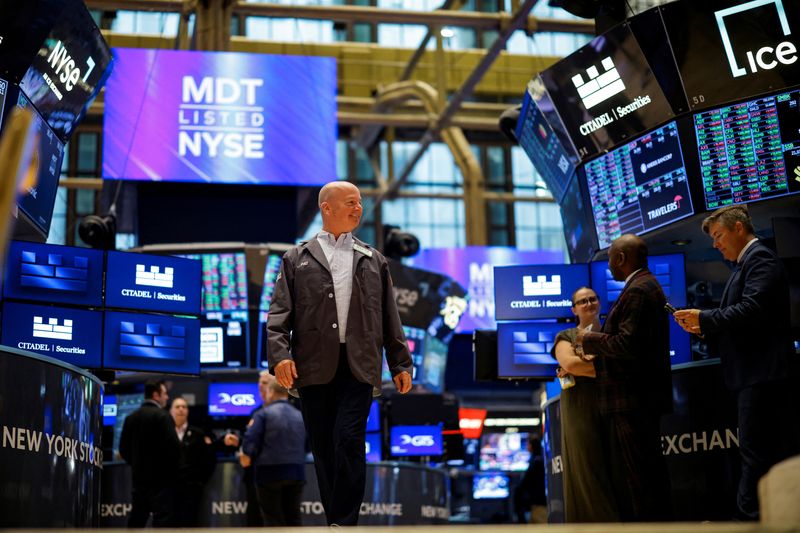By Ann Saphir
(Reuters) - Traders on Tuesday kept bets the Federal Reserve will start an expected series of interest rate cuts with a half-percentage-point move downward on Wednesday, an expectation that may itself put pressure on central bankers to deliver just that.
Futures tied to the Fed policy rate as of Tuesday mid-morning implied about a two-in-three chance of a bigger cut, versus a one-in-three chance of the more moderate 25 basis-point reduction still penciled in by analysts at most major Wall Street firms.
The Fed starts its two-day policy setting meeting today, and will meet again in early November and mid-December.
Traders expect a total of two half-point rate cuts plus one quarter-point cut over the course of the three remaining meetings for 2024, rate-futures show.
The Fed has kept its policy rate in the 5.25%-5.50% range for more than a year as it seeks to squeeze high inflation from the economy.
Inflation is now down to 2.5% and most policymakers view it as well on the way toward the Fed's 2% target. Meanwhile the unemployment rate rose to 4.2% last month. Nearly all Fed policymakers agreed even in July that it would soon be time to start cutting rates to avoid slowing the economy too much.
Until late last week, traders were betting on a quarter-point rate cut to begin the series, but flipped to favor a half-point cut after reports by the Wall Street Journal and the Financial Times late Thursday suggested a bigger rate reduction was still an option.
Since then, those market expectations have only firmed, barely budging Tuesday as government reports showed U.S. retail sales unexpectedly rose in August, and manufacturing rebounded, signs that the economy still has legs.
Still, analysts have speculated that the news reports last week were based at least in part on guidance from the central bank. The lack of apparent pushback from the Fed since then has served only to fortify those assumptions.
"As time passes with no apparent effort by the Fed to contest market pricing that has moved odds on for a 50 basis point cut at the September FOMC meeting we confirm we think the Fed likely will cut 50 though it is still not a slam dunk," wrote Evercore ISI's Krishna Guha, among the minority of economists who had called for a bigger rate cut even before last week's change of expectations in financial markets.
With markets now leaning heavily into a bigger policy easing, he wrote, "it is much harder to surprise hawkish than to surprise dovish, and no way the Fed thinks this is a good moment to introduce more (volatility)."
A half-point rate cut could draw a dissent or two from within the Fed, Guha predicted; but so, too, could a smaller quarter-point cut.

Fed policymakers by mutual agreement do not make public statements on monetary policy or the economy during the 10 days leading up to a rate-setting meeting.
"We think the Fed is trying to course correct at an unfortunate time," wrote SGH Macro Advisors' Tim Duy. "The blackout period prevents conventional communications, and the Fed is left with something clumsier."